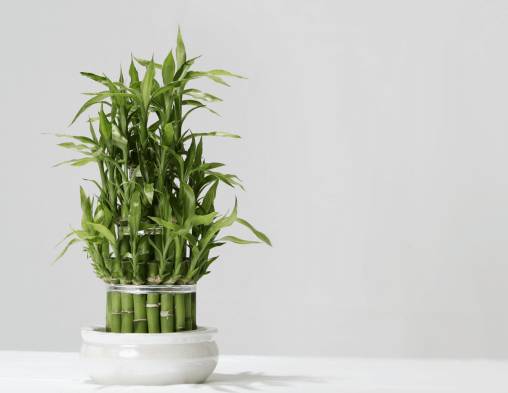
Lucky bamboo (Dracaena sanderiana) is a captivating houseplant that graces homes and offices with its elegant presence. Despite its name, lucky bamboo isn’t a true bamboo; it belongs to the Dracaena family. Its slender, green stalks and delicate leaves make it a popular choice for both beginners and seasoned plant enthusiasts.
Bright, Filtered Sunlight: Lucky bamboo prefers bright, filtered sunlight, similar to what you’d find under a rainforest canopy. Place it near a window with indirect light exposure. Avoid direct sunlight, as it can scorch the leaves.
Low Light Tolerance: While lucky bamboo grows best with plenty of bright indirect light, it can tolerate periods of low light conditions—typically around 100 foot-candles (ftc) or less. Low light areas include obstructed north-facing windows or spaces away from windows, such as the middle of a room.
Adaptability: Lucky bamboo can survive in low light, but it won’t thrive at this level. If you notice the plant stretching or the green color fading, consider providing more light. Rotating the plant periodically ensures even light distribution.
In summary, while lucky bamboo can manage in low light, it’s ideal to place it where it receives bright, indirect sunlight for optimal growth and health. Whether you’re a seasoned plant enthusiast or a beginner, lucky bamboo’s adaptability makes it a delightful addition to any indoor space!
Cultural Significance
In Chinese traditions, lucky bamboo is more than just a decorative plant—it symbolizes various blessings and positive energies. The number of stalks in a lucky bamboo arrangement holds specific meanings:
- Two Stalks: Represent love and partnership.
- Three Stalks: Symbolize happiness (Fu), wealth (Lu), and long life (Soh).
- Five Stalks: Bring balance, peace, harmony, and power to all aspects of life.
- Six Stalks: Attract good luck and prosperity.
- Seven Stalks: Promote good health.
- Eight Stalks: Signify growth and abundance.
- Nine Stalks: Bring great luck.
- Ten Stalks: Represent perfection.
- Twenty-one Stalks: Convey a powerful blessing.
